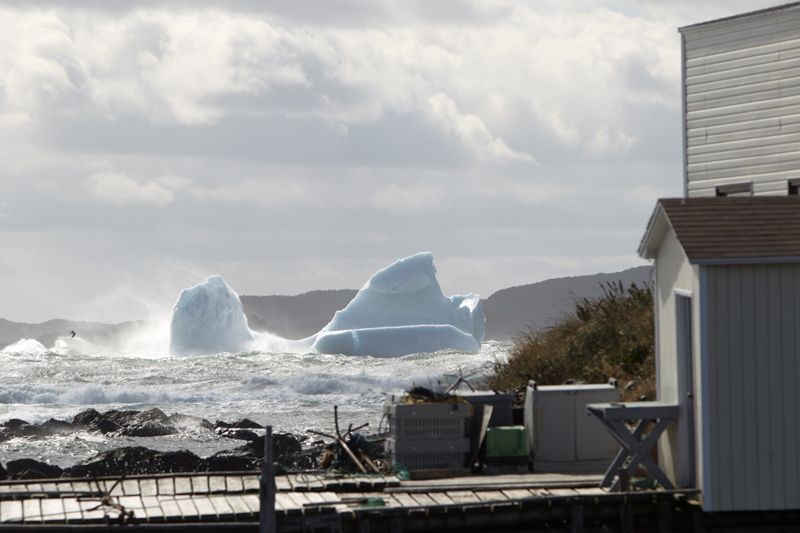The remote Canadian east coast province of Newfoundland delivers a memorable iceberg parade each year. Chasing icebergs in Newfoundland’s Iceberg Alley is an experience to remember.
Around 40,000 icebergs calve annually in Greenland, floating southwards from Baffin Bay along the stretch of water known as ‘Iceberg Alley’.
Contents
Iceberg Alley
Up to 2% (around 800) make it as far as St John’s in southern Newfoundland.
The parade usually lasts between May and August, when these 10,000-year-old ice sculptures of all shapes and sizes are swept south by ocean currents.
These icebergs range from growlers the size of a grand piano to massive ice shelves as big as a multi-storey building.
Where to see icebergs in Iceberg Alley
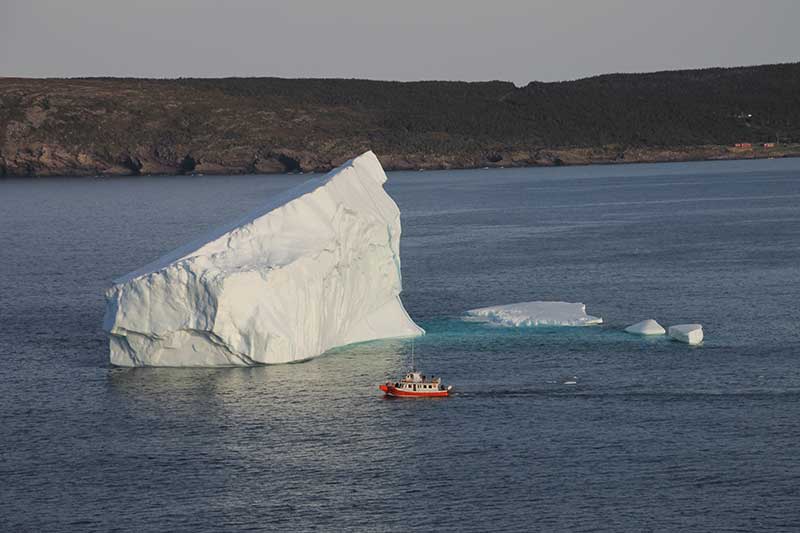
Fogo Island
One of the four corners of the flat earth is a rocky hill in northeast Newfoundland.
Well, that’s according to the Flat Earth Society.
To me, it’s a bit of mystery why a corner of the flat earth should be located on a small island with a population of around 2700 people and several thousand gannets.
To get to Fogo Island from Australia, you fly to Vancouver, on the west coast of Canada, then to either Halifax in Nova Scotia or Newfoundland’s capital, St John’s, on the east coast, and on to Gander, which was once one of the largest airports in the world and a refuelling stop for every transatlantic flight.
You’re likely to see more moose than cars on the one-hour drive along the highway from Gander to the ferry crossing at Farewell.
And there’s not a lot to see on the 45-minute ferry ride to Fogo Island, which is followed by another 20 minutes driving, past colourful timber houses, before reaching the foot of Brimstone Head.
As the crow flies, it’s 17,408 km from Sydney. It’s a mighty long way to go for a 30-minute hike, especially when it’s cold and windy.
Fortunately for me, the weather gods are in a good mood.
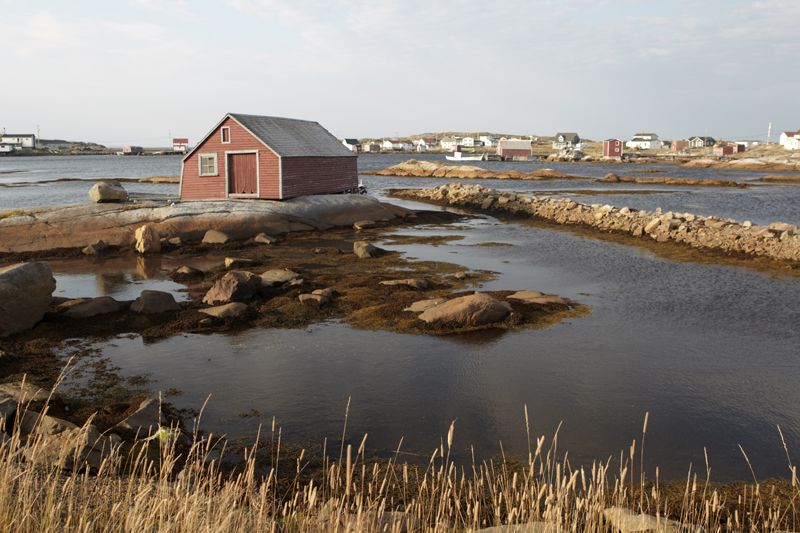
The sky is big and blue.
The sun’s rays dance on the windswept outcrop of mossy rock.
Perspiring, I peel off my layers, chuckling at the sign that says:
“You are nearing the edge of the flat earth. One false step could be your last. Number of people lost to date ‘0’”
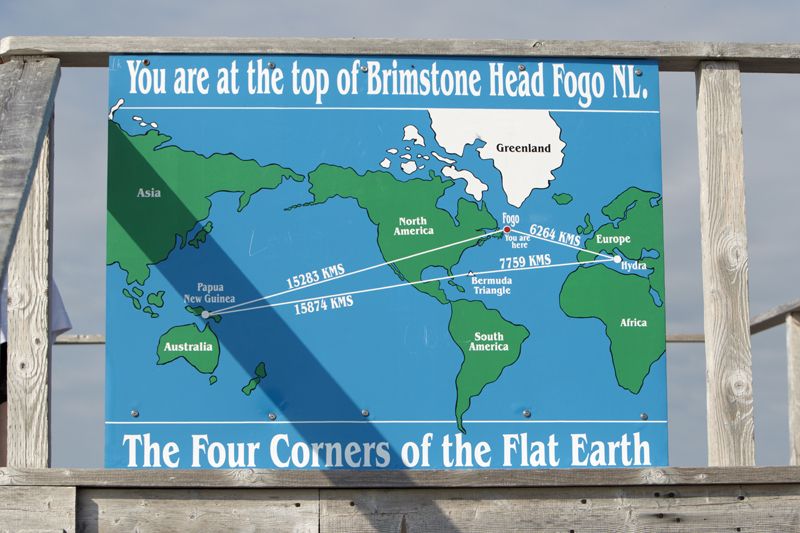
By the time I reach the board with a map linking Fogo Island and the other three corners of the flat earth – Hydra, Bermuda Triangle and Papua New Guinea – I’ve stripped down to a tank top.
At the top of the hill, I can’t believe what I’m seeing.
Five growlers, islands of white ice against a blue expanse of calm ocean, look lonely and oddly out of place in the summery landscape.
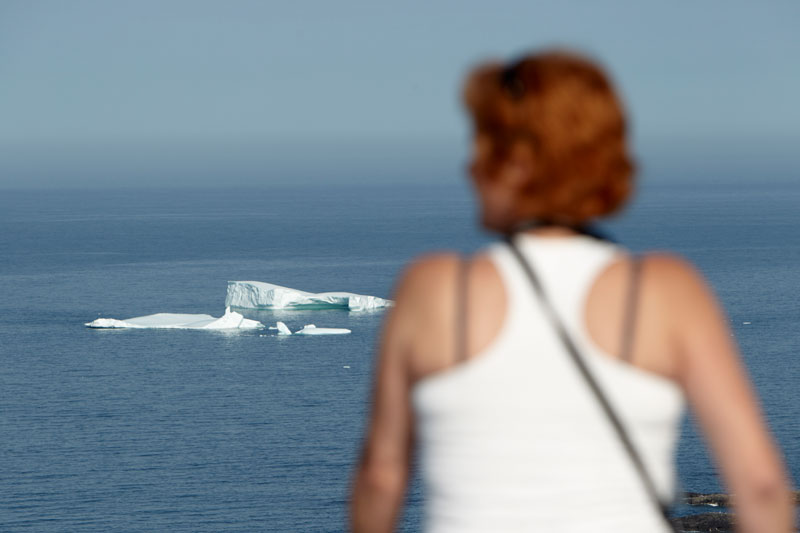
The small icebergs have broken off from a ‘mother ship’, which might have been a bigger iceberg that floated down from Greenland.
Perhaps it was just like the one I’ve spotted in the distant waters – over a barren hill past a cluster of colourful timber houses – about the height of a 15-storey building.
What else to do on Fogo Island
Aside from iceberg spotting, there’s not a lot to do on Fogo Island except:
- Partridgeberry picking
- Hiking the Turpin’s Trail, an eight kilometre route that starts at a sandy beach and ends at the Irish village of Tilting.
- Sampling delicious partridgeberry ice-cream from Growler’s Ice Cream at Joe Batt’s Arm.
- June is the time to see Atlantic puffins.
- In late July, a must-see is the Great Fogo Island Punt Race to There and Back, where local boaters row 16km and back to Change Islands through rough open waters past the spectacular parade of icebergs.
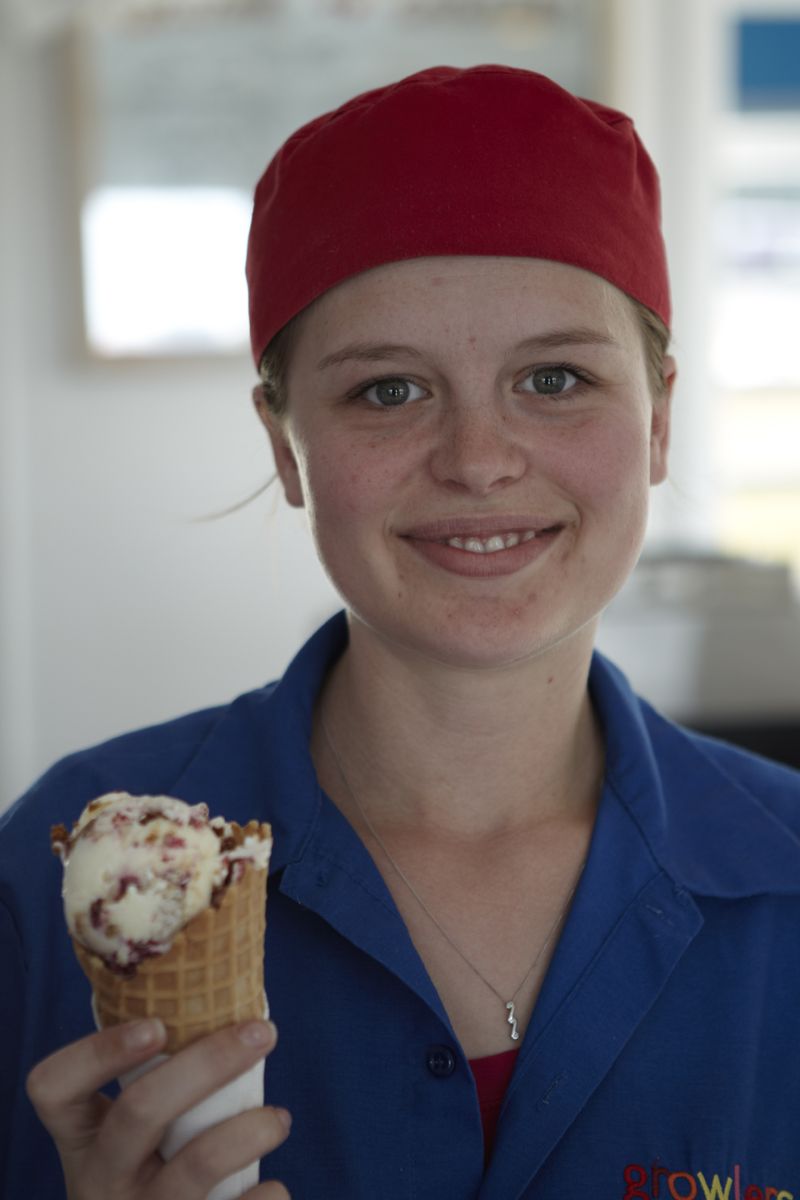
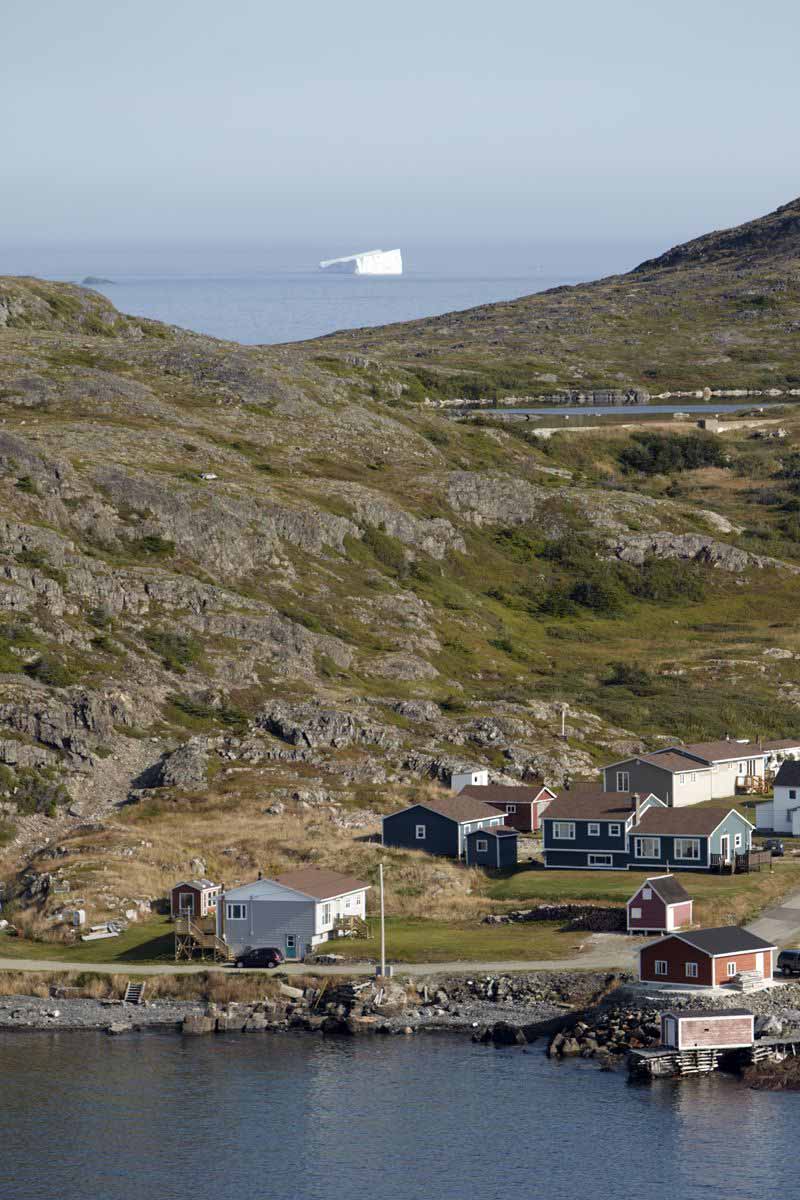
Change Islands
The local ferry is a more comfortable means of getting to Change Islands.
I visit the Newfoundland Pony Sanctuary, where a colt has just been born, the Olde Shoppe Museum, which is stacked to the rafters with old things, and the Change Islands Interpretation Centre, where I can’t resist purchasing a colourful hand-made quilt sewn by a local woman.
From a high point on Squid Jiggers Trail, I spot an ice shelf about the length of the Queen Mary 2 floating towards Twillingate.
The historic fishing village of 3,500 people bills itself as the ‘iceberg capital of the world’ and is well organised for tourists, with boat tours leaving regularly from the town dock.
What else to do in Twillingate
- There’s also an art gallery devoted to icebergs
- Auk Island Winery, where you can sample wines produced with local berries and iceberg water
- A handful of restaurants scattered around town that serve iceberg beer.
Iceberg Alley cruise from Twillingate
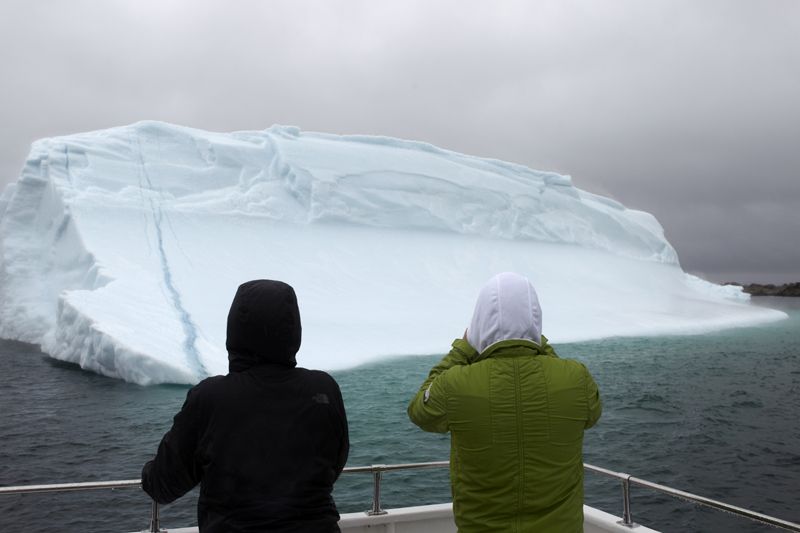
The weather has turned wild when I board the MV Cetacean Quest at Twillingate’s Pier 52.
It’s pelting with rain; the sky is grey; and waves are white foamy crests in the inky ocean.
The bad weather fails to dampen my enthusiasm, or that of the French film crew aboard filming a documentary about the Titanic.
We cruise past an impressive wind-whipped ice shelf about 300m long and five storeys high before heading for a smaller iceberg, about 10 storeys high and, according to the film crew’s geologist, probably similar in size to the iceberg that sank the Titanic 650km away.
We circle the iceberg, cruising so close I can see the green ice below the water.
The skipper reminds us that what we’re seeing above water is only the tip and 7/8ths of its mass is below water.
Icebergs float because the density of ice is lower than that of sea water.
I stare at the white mound of ice in awe, caught by its spell, but the magic of the moment is broken when shards of ice float up to the side of the boat.
Someone shouts and a crew member leans over the edge, netting a sizeable chunk of ice as a souvenir and to drink with the local Screech rum.
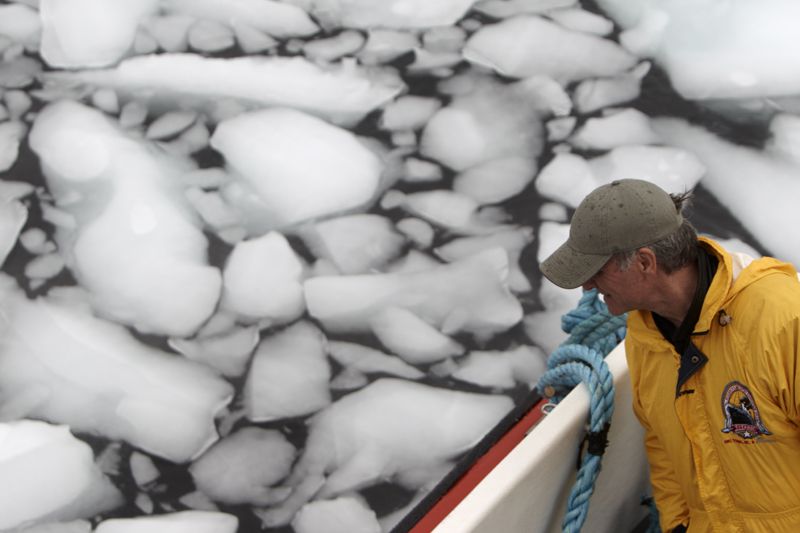
Viewed from land, the icebergs are still impressive and the next morning, I drive along the shoreline on the road to the light house, stopping randomly wherever there’s an iceberg in sight.
Close to shore, coffin-sized icebergs are tossed by fierce waves and small jagged growlers swirl dizzily near a rocky beach.
A small mountain with twin peaks floats past someone’s jetty while a white version of the Olgas, with sculpted domed formations, is pounded by waves.
There are icebergs of all sizes and shapes and I feel totally indulgent chasing after these white wonders at the edge of the world.
Ferryland
As the residents of Ferryland, one hour south of St John’s (Newfoundland’s vibrant city) discovered, icebergs can be unpredictable.
The town has a ringside seat of Iceberg Alley, where some 600 plus icebergs float past each year.
In 2017, an enormous iceberg 150 feet high made the news when if dwarfed the small colourful houses in Ferryland.
The huge iceberg floated close to shore and got stuck, making Ferryland a popular tourist destination that Easter.
Iceberg Products
Entrepreneurial locals have worked hard to harness the natural supply of iceberg water by creating a range of products that visitors can sample while visiting Newfoundland. Here’s a list of iceberg edibles.
Iceberg water
Iceberg water is a natural water created from melted icebergs that have travelled from the north. Harvesting water from icebergs has been done for hundreds of years and iceberg water has a low mineral content, so it’s often used as a mixer with single malt whiskey. Iceberg water is available throughout Newfoundland – even in the corner store.
Iceberg beer
Quidi Vidi Brewery uses water from local icebergs to make its iceberg beer. The purity of the iceberg water produces a refreshing North American-style lager.
Iceberg vodka
Iceberg Vodka is a Newfoundland company that has been making iceberg vodka since 1995. The ice is melted and blended in St John’s, with triple distilled spirit made from Ontario sweet corn.
Iceberg wine
Auk Island Winery in Twillingate makes wines from wild organic Newfoundland berries and fruits as well as wines using Iceberg water.
Iceberg Facts
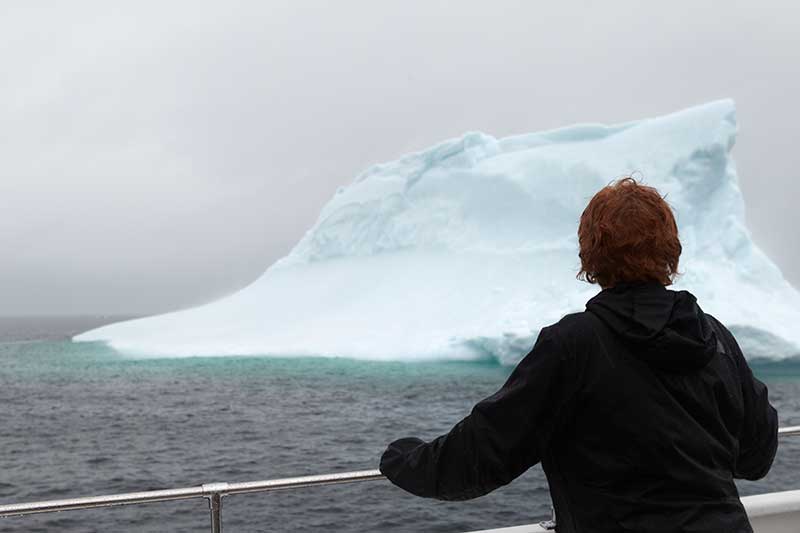
- Only 10% of an iceberg is above water. When you look at a towering iceberg that dwarfs a boat, it’s mind boggling to learn that 90% of that gigantic iceberg is underwater.
- Around 40,000 icebergs are created each year by breaking off from glaciers and sliding into the ocean.
- Icebergs consist of water that is 10,000 to 12,000 years old.
- The largest iceberg in the Northern Hemisphere was 13 km long and 6km wide. It was seen near Baffin Island in 1882 and was about 20 m above water.
- The largest iceberg in Antarctica was 6450 sq km. It calved off from the Ross Ice Shelf in 1987.
- Each iceberg is unique in shape, size and colour. Shapes of icebergs include arches, pyramids, blocks and domes. Colours range from shades of white to turquoise.
- Icebergs are unstable and can roll over when the ice melts.
- Icebergs are swept along by forces of nature and the speeds they travel at are governed by the shape of the iceberg as well as other factors, including ocean currents and wind. When they’re on the move, they travel at speeds of 0.7 km/h to 3.6 km/h.
- Growlers are around the size of a grand piano
- Bergy bits are the size of a small house.
Resources
The Canadian Ice Service provides more information about ice in Canadian waters.
Plan Your Trip

Rent A Car – Find the best car rental rates at Discover Cars. They compare car hire companies to provide you with the best deal right now.

Find A Hotel – If you’re curious about this article and are looking for somewhere to stay, take a look at these amazing hotels.
